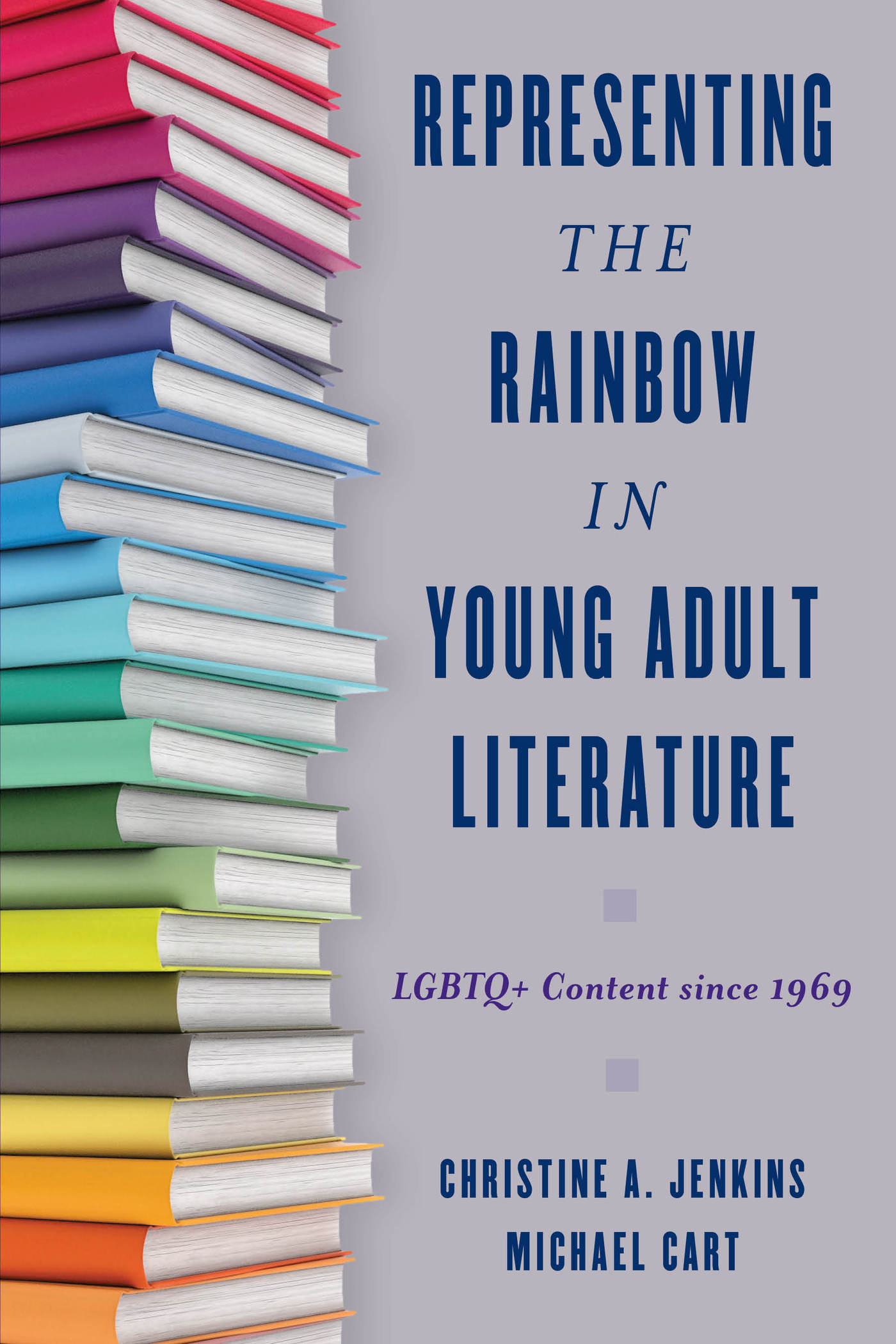Representing the Rainbow in
Young Adult Literature
Representing the Rainbow in
Young Adult Literature
LGBTQ+ Content since 1969
Christine A. Jenkins and Michael Cart
ROWMAN & LITTLEFIELD
Lanham Boulder New York London
Published by Rowman & Littlefield
An imprint of The Rowman & Littlefield Publishing Group, Inc.
4501 Forbes Boulevard, Suite 200, Lanham, Maryland 20706
www.rowman.com
Unit A, Whitacre Mews, 26-34 Stannary Street, London SE11 4AB
Copyright 2018 by The Rowman & Littlefield Publishing Group, Inc.
All rights reserved. No part of this book may be reproduced in any form or by any electronic or mechanical means, including information storage and retrieval systems, without written permission from the publisher, except by a reviewer who may quote passages in a review.
British Library Cataloguing in Publication Information Available
Library of Congress Cataloging-in-Publication Data
Names: Jenkins, Christine, 1949 author. | Cart, Michael author.
Title: Representing the rainbow in young adult literature : LGBTQ+ content since 1969 / Christine A. Jenkins and Michael Cart.
Description: Lanham : Rowman & Littlefield, 2018. | Includes bibliographical references and index.
Identifiers: LCCN 2017055185 (print) | LCCN 2017060085 (ebook) | ISBN 9781442278073 (electronic) | ISBN 9781442278066 (pbk. : alk. paper)
Subjects: LCSH: Young adult literature, AmericanHistory and criticism. | Homosexuality in literature. | Sexual minorities in literature.
Classification: LCC PS374.H63 (ebook) | LCC PS374.H63 J48 2018 (print) | DDC 810.9/353dc23
LC record available at https://lccn.loc.gov/2017055185
 TM The paper used in this publication meets the minimum requirements of American National Standard for Information Sciences Permanence of Paper for Printed Library Materials, ANSI/NISO Z39.48-1992.
TM The paper used in this publication meets the minimum requirements of American National Standard for Information Sciences Permanence of Paper for Printed Library Materials, ANSI/NISO Z39.48-1992.
Printed in the United States of America
To the courageous authors whose early contributions to young adult literature created and sustained the literature that provided (and continues to provide) invaluable support to LGBTQ+ teens and their allies:
John Donovan for starting the whole thing in 1969; and pioneering novelists Francesca Lia Block, Aidan Chambers, Nancy Garden, M. E. Kerr, David Levithan, and Jacqueline Woodson.
And to the creators of groundbreaking young adult books in other genres:
Frances Hanckel and John Cunningham for their nonfiction milestone A Way of Love, A Way of Life: A Young Persons Introduction to What It Means to Be Gay (1979); Marion Dane Bauer, for her trailblazing short story collection Am I Blue? Coming Out from the Silence (1994); Judd Winick, for his transformative graphic novel Pedro and Me: Friendship, Loss and What I Learned (2000).
All of you made the way easier for others. Thank you!
Acknowledgments
When we (Christine and Michael) first met in person at an American Library Association Annual Conference in the mid-1990s, we were already familiar with each others work, and thus aware of our common interest in young adult literature with queer (aka LGBTQ+) content, and our common belief was that this literature mattered in the lives of LGBTQ+ teens and their allies.
After the conference, we returned to our homes in California (MC) and Illinois (CJ), but kept in touch via e-mail, noting, sharing, and critiquing new titles as they appeared. This body of literature continued to grow, but still the books themselves were often dismissively described as problem novels. Undaunted, we forged ahead in seeking new YA titles with LGBTQ+ content: identifying, acquiring, and reading them, and alerting each other to our finds. The number of booksstill confined to the category of contemporary realismcontinued to expand, and our sustained mutual interest and conversations turned into a series of collaborations, conference presentations, and, finally, books.
So here we are, decades later, having gathered, examined, and analyzed hundreds of young adult titles with LGBTQ+ content in an increasingly broad range of fiction and nonfiction genres and formats. That said, we are well aware that our collection and analysis of young adult books with LGBTQ+ content can never be absolutely comprehensive; with so many titles now appearing, we are bound to miss a few, and our collection and analysis of young adult books with LGBTQ+ content will always lag behind the actual trajectory of the ever-expanding world of YA literature.
Looking over the past decades, so many people, institutions, and publications have contributed to our work on this book. First, we want to recognize the scholars who provided encouragement and a scholarly perspective in the earliest years of this project: Patty Campbell, Eliza Dresang, Patricia Enciso, Lenore Gordon, K. T. Horning, Phyllis Marquart, and Roger Sutton.
Wed like to acknowledge the help and support weve received from the students, staff, and faculty of the School of Information Sciences at the University of Illinois at Urbana-Champaign.
Thank you to Jeanie Austin, Claire Gross, Melissa Hayes Hahn, Cass Mabbott, Alaine Martaus, Micki Smith, April Spisak, and other current and former doctoral students who identified, located, and helped us evaluate books from throughout the prodigious library collections at the University of Illinois at Urbana-Champaign. We couldnt have done this without you!
Thank you to the many scholars, reviewers, and librarians who were so willing to engage with and discuss the many questions that arose from our research. They include (but are not limited to) Robin Brenner, Betty Bush, Chris DArpa, Loretta Gaffney, Betsy Hearne, Karla Moller, Nancy OBrien, Deborah Stevenson, and others who have helped facilitate this work.
At the University of Illinois, we used the resources of the Center for Childrens Books; the Social Sciences, Health, and Education Library; and the Main Library. At the University of Wisconsin, Madison, we used the resources of the Cooperative Childrens Book Center, the iSchool Library, and the Graduate Library. Two very different special libraries in Minneapolis were also extremely helpful: the Kerlan Collection in the Childrens Literature Research Collections at the University of Minnesotas Anderson Library, and the Quatrefoil Library, a member-supported lending library and community center for the Twin Cities LGBTQ+ communities.
Public libraries services to young adults also help the scholars who study young adult books. For us this has been the Champaign Public Library, the Urbana Free Library, and the Hennepin County Library.
Thank you to Sarah Park Dahlen, scholar and energetic Sacred Writing Time organizer. And, finally, our enduring thanks to Sue Searing, dear friend and wise reader, our editor with a pen of gold.
Introduction
The first young adult novel with LGBTQ+ content, John Donovans Ill Get There. It Better Be Worth the Trip, appeared in 1969, Some reviewers welcomed the books publication, while others were skeptical that such a book could ever be appropriate for teen readers. Nevertheless, it inspired the first stirrings of LGBTQ+ literature for young adults. In the ensuing decades the number of fiction titles rose steadily. Ten young adult titles with LGBTQ+ content were published in the 1970s, forty in the 1980s, eighty-two in the 1990s, 292 in 20002009, and 513 titles in 20102016. On the one hand, the resulting sum of 937 fiction titles is impressive. One the other hand, during that same time period tens of thousands of YA fiction titles were published in which every character was/is presumed to be heterosexual. Although statistics measuring the number of YA titles published each year are fugitive, we estimate the
Next page

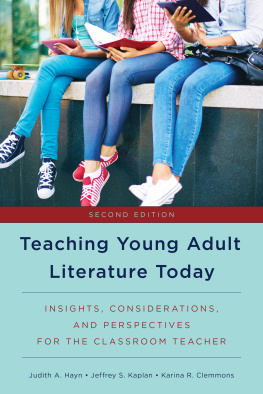
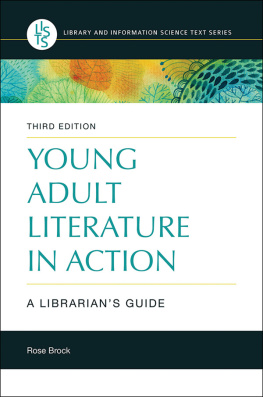
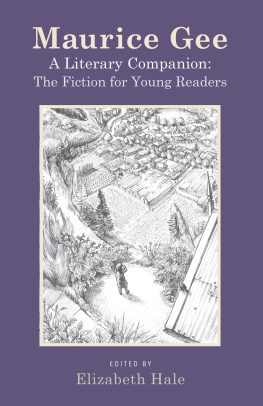
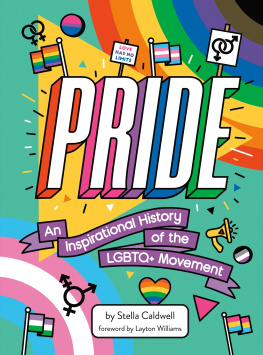

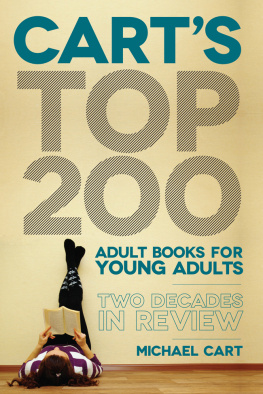
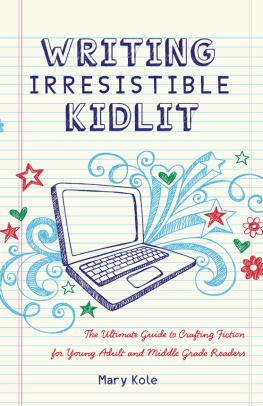
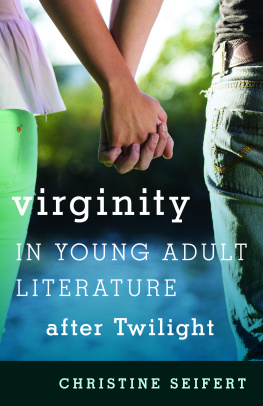
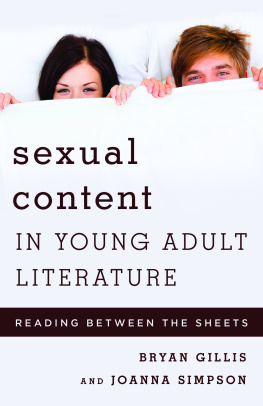
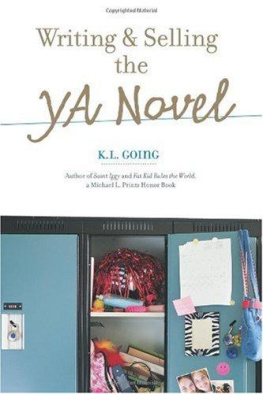
 TM The paper used in this publication meets the minimum requirements of American National Standard for Information Sciences Permanence of Paper for Printed Library Materials, ANSI/NISO Z39.48-1992.
TM The paper used in this publication meets the minimum requirements of American National Standard for Information Sciences Permanence of Paper for Printed Library Materials, ANSI/NISO Z39.48-1992.